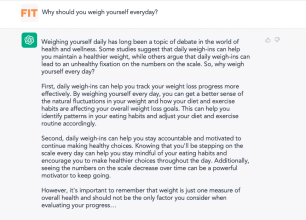As an orthopedic surgeon, I’ve spent decades watching patients prepare for and recover from joint replacement and other musculoskeletal procedures. One of the clearest lessons from the literature and my own practice is that surgical risk isn’t binary. Complications, infections, and delayed recovery don’t suddenly appear at a BMI of 30 – they climb steadily, starting in the “overweight” range. Poor metabolic health alone can cause considerable post-operative issues, and many of these patients have a normal or moderately elevated BMI.
The Risk Curve Is Continuous
Surgical risk does not suddenly appear at BMI 30 — it rises steadily across the spectrum. Registry and large cohort data show increased infection, wound problems, and readmissions starting in the “overweight” range (BMI 25–29.9). For periprosthetic joint infection, the inflection point is around BMI ~31, but each BMI unit above the mid-20s contributes to higher risk.
Nutrition and Metabolic Health Matter
The driver of risk isn’t weight alone. Poor nutrition, low protein intake, insulin resistance and unrecognized sarcopenia amplify those risks even in patients who aren’t technically obese. Correcting these factors before surgery improves wound healing, lowers infection rates, shortens length of stay, and enhances functional outcomes.
Albumin is not a true nutrition marker but consistently correlates with perioperative risk. Low albumin should be treated as a red flag for further evaluation.
Better indicators of malnutrition include:
- Documented unintentional weight loss.
- Poor oral intake or sarcopenia (muscle loss).
- Screening tools such as MUST or PONS.
Regardless of BMI, patients with inadequate protein and micronutrient intake are at higher risk for wound complications, delayed recovery, and infections.
Optimizing nutrition for at least 2 weeks preoperatively — emphasizing protein, vitamin D, and other key nutrients — improves outcomes.
Why “Overweight” Patients Benefit
- Even modest weight loss (5–7%) reduces predicted complications. Moving a patient from BMI 29 → 27 measurably lowers modeled risk.
- Short pre-op programs show that small changes are achievable in 6–12 weeks and are associated with better surgical readiness.
- Optimized heavier patients report equal or greater improvements in PROMs and satisfaction compared with normal-weight patients — evidence that optimization, not exclusion, should guide care.
Practical Steps for BMI 25–29.9
This is why I advise Prescribe FIT. Their remote coaching platform makes it feasible to identify at-risk patients early – including those who are “only” overweight – and help them lose a modest amount of weight, improve their nutrition, and build strength before surgery. These small changes, even over 6–12 weeks, can translate into measurably better outcomes, higher satisfaction, and lower complication rates. Other practical steps, include:
- Screen: Use nutrition risk screening (MUST, PONS). Consider labs (albumin, vitamin D, HbA1c) as risk markers.
- Nutrition targets: 1.2–1.6 g/kg/day protein; modest caloric deficit (300–500 kcal/day) aiming for 5–7% weight loss; micronutrient correction.
- Supplementation: High-protein oral supplements for ≥14 days if intake is poor or risk screen is positive.
- Prehab & lifestyle: Resistance training 2–3×/week, daily steps, structured aerobic activity.
- Support: Remote dietitian-led coaching programs are proven feasible and effective preoperatively.
In short, optimization isn’t about exclusion; it’s about preparing every patient to do as well as possible. Prescribe FIT gives surgeons a practical, scalable way to make that happen.
Download the Evidence-based Brief from Dr. Luks
References
- George J, Piuzzi NS, Ng M, et al. JBJS 2018– NSQIP database (>80k TKAs): complication risk rises continuously with BMI; overweight patients already show increased 30-day complications.
- Shohat N, Tarabichi M, Tischler EH, et al. CORR 2018– No safe BMI “threshold”; risk climbs steadily as a continuous variable beginning in the overweight range.
- Telang S, et al. J Arthroplasty 2025– PJI risk increases per BMI unit; changepoint identified around BMI 31, highlighting benefit of even modest weight reduction.
- Wagner ER, Kamath AF, et al. JBJS 2016– Mayo Clinic cohort: higher BMI linked to greater risk of reoperation and infection; risk elevation begins below morbid obesity.
- Williams DGA, Molinger J, Wischmeyer PE. Nutr Clin Pract 2019– Review: malnutrition is a strong predictor of complications, LOS, and mortality; advocates structured peri-op nutrition care.
- Antonelli B, Chen AF. Arthroplasty 2019– Recommends ≥14 days of pre-op protein supplementation and micronutrient optimization to reduce SSI/PJI risk.
- Seward MW, et al. J Arthroplasty 2021– Remote dietitian-led weight loss pre-TJA is feasible and effective using app-based support.
- Liljensøe A, et al. Arthritis Care Res 2021– RCT: 8-week pre-op program yielded ~10 kg weight loss (6–7 kg fat), better function, sustained 1-yr benefit.
- Abhari S, et al. Arthroplasty Today 2023– PROMs study: despite higher complication risk, obese patients reported similar satisfaction and gains when optimized.
- Pasqualini I, et al. J Arthroplasty 2024– Higher BMI patients achieved greater early PROM improvements post-TKA, reinforcing value of optimization over exclusion.
Published on October 16, 2025


